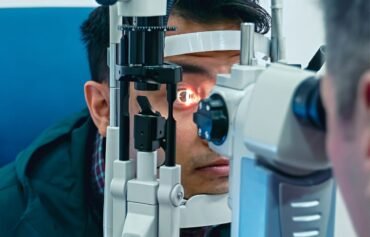You must be familiar with the many conditions that can affect the spine; but, are you familiar with the Disc Osteophyte Complex?

What Is Disc Osteophyte Complex?
When bone spurs form and impact the intervertebral disc or the vertebrae in the spine, a spinal condition is said to be present. The musculoskeletal system is responsible for the development of bone spurs, which are also known as osteophytes. The majority of the damage was brought on through general use and deterioration.
What are the Reasons Behind It?
As you get older, you run the risk of developing osteophyte complex. Other causes include degenerative disc disease such as osteoarthritis, stress, trauma, injuries brought on by repetitive use, and being overweight or obese. On the other hand, it typically makes your backbone weaker. If you have this illness, your body will produce extra bone lumps. These lumps might be painful. These bumps either contribute to the spine’s increased stability by limiting its range of motion or reinforce its physical integrity.
Additionally, some people have bone spurs in their body, but they never have any discomfort associated with them. On the other hand, if the bony structure restricts the activity of the nerve system, you may suffer a wide variety of painful symptoms.
What Roles Do Intervertebral Discs Play in the Human Body?
The spinal column that surrounds and protects your backbone is made up of individual spines that are separated by discs. Therefore, the following applications can be found for these discs:
- It acts as a shield for the spinal canal.
- Is active in the process of shock absorption between the vertebrae
- Allows for a bending motion of the spine (flexion)
- It is responsible for both the ligamental and the conjunctional activities.
How does it put pressure on the spinal nerves?
When a series of bone limbs sprout on several spines, you will suffer from a condition known as Disc Osteophyte Complex. It puts pressure on the nerves and even the spinal canal, which can cause the intervertebral discs to become compressed. When bony branches develop around your foramen, it can cause the channel leading to your spinal canal to become narrower, which can lead to spinal stenosis.
What are the signs and symptoms?
When we discuss the signs and symptoms of this spinal ailment, we come to the realisation that in its first stages, you might not even experience any of the symptoms at all. It’s possible that you’ll feel pain when the branches continue to grow and eventually make contact with the vertebrae or squeeze the nerve roots. Because of this, it could make it difficult for you to move.
When you encounter nerve compression, you may experience:
- a suffocating anguish
- a suffering that is spreading to the edges
- shock
- scorching sensation
- or pin-and-needle feeling
This illness has only very seldom been linked to the onset of paralysis in its victims.
Additionally, this condition can manifest in a number of distinct ways. For example, bone growths may occur in the region of the neck, which might result in:
- Pain in the Head
- A dull aching in the neck
- Neck stiffness
- Stinging and burning pain in the arms and shoulders
- A lack of emotion as well as tingling in the arms
- Weakened Arms
How Can You Tell If You Have Posterior Disc Osteophyte Complex?
In the event that you are found to be suffering from a posterior disc osteophyte complex, your medical specialist will inquire about your family history. They might ask if any of your parents or any of your ancestors suffered from osteoarthritis. As a result, the doctor will be better equipped to inspect the regions of your spine for any signs of inflammation or tenderness thanks to your medical history. It can be identified with the use of palpation.
And if your doctor suspects that you have disc osteophyte complex, they might recommend radiological tests on you like x-rays or MRI scans. Therefore, your doctor will be able to inspect the inside structures thanks to this. They will also be able to evaluate whether or not the growth of bony limbs is causing irritation to the nerves.
What is the treatment for Disc Osteophyte Complex?
Following a good diagnosis, your medical professional may advise that you undergo a standard treatment that does not involve surgery. On the other hand, your initial treatment might consist of one or a combination of the following:
- Rehabilitation through physical means
- Non-steroidal Anti-inflammatory Drugs
- Treatment with Injections of Corticosteroids
- OTC Medication for the Treatment of Pain
- Ice, to Help Reduce the Swelling
- Chiropractic adjustment Manipulation
- Stretching Exercises, Like Yoga
On the other hand, if your indications and symptoms continue for more than three months, your doctor may suggest that you get surgery. In the past, the only treatment option for this condition was surgery on the backbone, which typically required patients to stay in the hospital and had lengthy recovery times.
This problem can be treated using a number of pioneering spinal surgical procedures, including the following:
- Foraminotomy
- Laminotomy
- Removal and resection of osteophytes
Conclusion
If you get tested soon after experiencing a stressful experience, you could not have any disc-osteophyte complexes if you do so. Therefore, if you do, it is considered a pre-existing condition.
Your bone edges, especially if they have fused, might cause harm to the discs and spine. Bone growths could develop if the disc connection heals properly.
After a traumatic occurrence, it takes at least a few weeks for osteophytes to start developing in the affected area. When the growths strain on the nerves, you will experience discomfort. Your disc bulge might get worse after an accident if it was already there before the accident. And the severity of your symptoms may increase.
If you have suffered injuries to the ligaments and intervertebral discs in your spine, you may experience instability and excessive mobility in your joints. It is possible for this to cause stress to the bone or ligament connections. Your body will go through cycles of healing and re-injury as a result of this ongoing misery, which will lead your bones to grow too quickly.
As a result, you ought to talk to a specialist at Premier Pain Centre so that you can get a prompt diagnosis and expert treatment.





